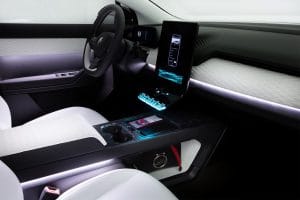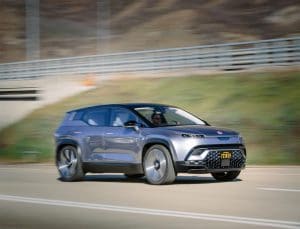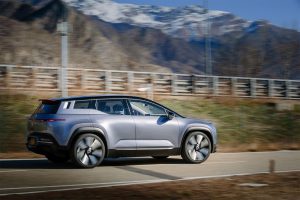The Fisker Ocean was one of the unexpected stars at the recent Consumer Electronics Show and was set to make its public – and European – debut this week at the Geneva International Auto Show. Despite the event’s cancellation due to the coronavirus epidemic, Fisker has opened up about the all-electric SUV filling in some details, including charging, safety, and other details.
The Ocean is, of course, part of Danish designer-cum-entrepreneur Henrik Fisker’s second try at launching his own company, his first crashing hard. He’s moved on from plug-in hybrids like the earlier Fisker Hybrid, the new Ocean going all electric – while adopting a crossover shape, rather than the earlier model’s svelte sport sedan lines.
It’s a potentially promising space, albeit also one with a lot of challenges, including a fast-growing array of competitors, from upstart Tesla and established brands like Ford and Audi, to other start-ups such as Lucid and Byton. But, ever upbeat, Henrik Fisker seems nonplussed, declaring, “We are aiming to disrupt the automotive industry by challenging all conventions, development time, manufacturing scale-up, customer ownership experience, vehicle financing and service.” This would be, he added, “no small feat.”
(Starting with Ocean, Fisker plans to make 1M EVs by 2027.)
Among the specifications Fisker has finally provided, we’ve learned that the Ocean is fairly comparable in size to the Chevrolet Equinox, at 182 inches, nose-to-tail, 76 inches in width and 64 inches in height.
However, by moving the battery pack, motors and other key drivetrain components into its skateboard-like platform, the electric SUV has recaptured some of the space where an engine would go to add more room for passengers and cargo. With the rear seats up there’s 20 cubic feet, expanding to 25 cu-ft with the shelf removed.
There’s also a removable parcel shelf and the back window can be rolled down – something Fisker calls “California Mode,” allowing things like lumber, to hang out the back.
There’s been a lot of attention paid to safety, Fisker tells us, both in terms of advanced driver assistance systems and passive features, such as what is described as side-crash beams, though a precise explanation of how this works hasn’t been released.
As we’ve seen with most new BEVs, especially long-range models, Fisker has put a premium on aerodynamics. There are active design elements up front, for example, a smart control system regulating how much airflow is required to keep the batteries cool without sacrificing aero efficiency.
Inside, the new electric SUV will make use of sustainable materials, where possible. The original Karma went so far as to use reclaimed wood veneer, a mindset carried over into the EV. On a high-tech front, the Ocean features a 9.8-inch digital instrument cluster and a 16-inch infotainment touchscreen.

On a high-tech front, the Ocean features a 9.8-inch digital instrument cluster and a 16-inch infotainment touchscreen.
(Fisker Ocean making formal debut at CES.)
As with Tesla and the upcoming Ford Mustang Mach-E, the Fisker Ocean will be offered in several different configurations, starting with a base version, priced at $37,499, which uses a single electric motor powering the rear wheels. All other versions will have twin motors providing through-the-road all-wheel-drive.
The AWD package makes 225 kilowatts, or 302 horsepower, and the company plans to reveal an “ultra-high-performance” version next year that promises to launch from 0 to 60 in less than 3 seconds.
The standard battery pack is 80 kilowatt-hours and the company expects range of around 300 miles, though the final EPA numbers won’t be released until later this year. If the figures hold, it would make the Ocean one of the most efficient EVs on the market, potentially yielding even better miles-per-kilowatt than Tesla delivers. It certainly would look good against the Audi e-tron which manages just 204 miles per charge despite having a 95 kWh pack.
Charging to 80% on a 150 kilowatt quick charger will take about 30 minutes, Fisker claims.

The Fisker Ocean is expected to start at more than $37K, but that can drop to about $30K with federal incentives.
The start-up hasn’t revealed all of its pricing figure yet, but it notes it will offer a “flexible,” essentially open-ended, lease starting at $379 a month. Meanwhile, it is planning to include free charging using Electrify America stations, though details have yet to be revealed.
One advantage Fisker may have over Tesla is the fact that his company still gets up to $7,500 in federal tax credits, Tesla losing those incentives entirely at the beginning of this year. As a result, the base model of the Fisker Ocean would start around $30,000.
Look for production to start next year, deliveries beginning late in 2021. But for those who don’t mind the wait, Fisker has started taking refundable deposits of $250 already.
(Fisker dips his toe in the Ocean with the new EV.)
Never demure, Henrik Fisker is forecasting the start-up will sell 1 million vehicles between 2022 and 2027.


